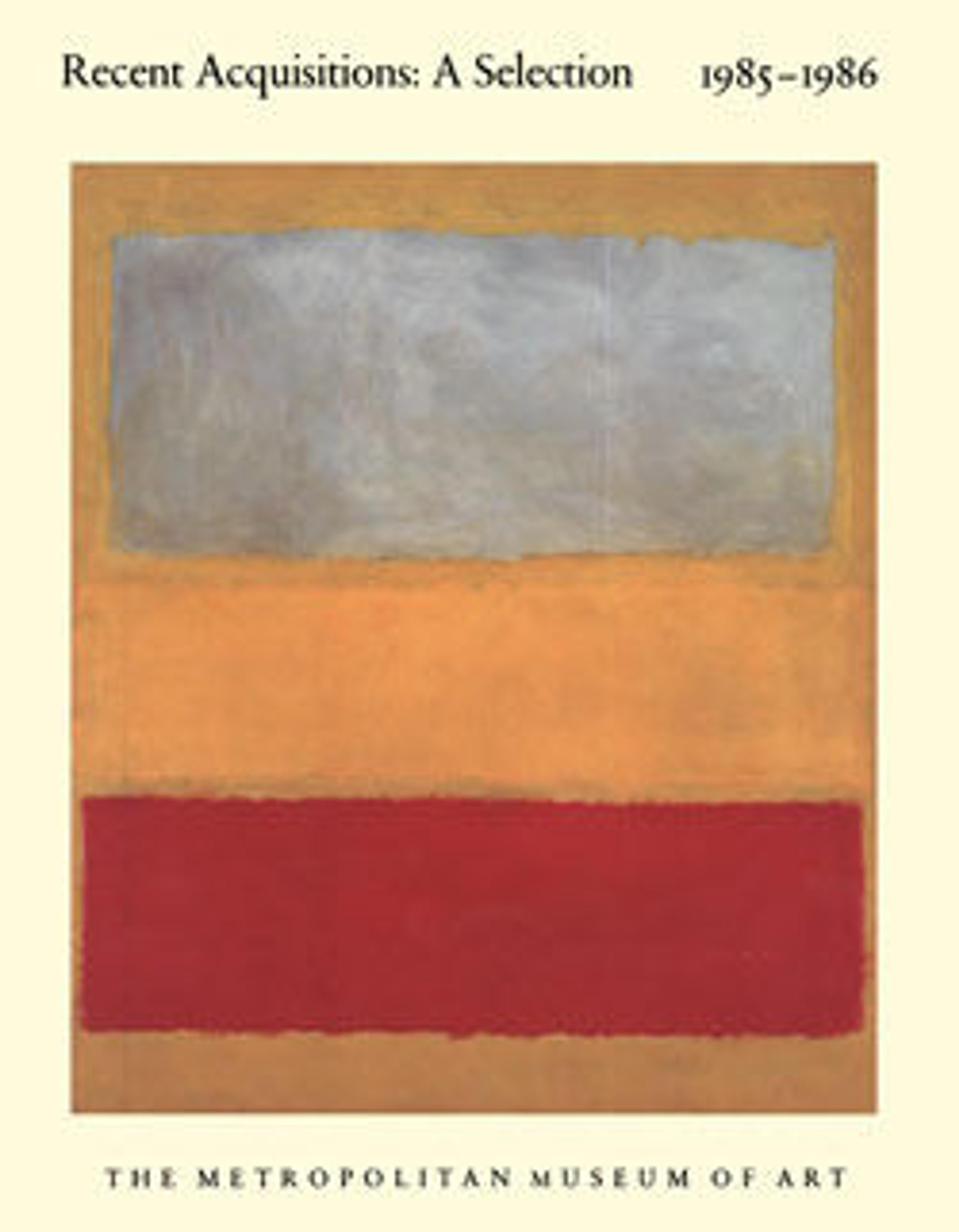Composite Elephant
Rocks and animals that upon closer inspection reveal themselves to be composed of human and other figures are a common conceit in Islamic art. Female dancers and musicians in Indian garb have formed the legs, body, and tusks of the purple elephant here. Astride the beast are a noble figure with an elephant goad, acting as mahout; a female to the rear of him holds a cloth fan. This whimsical painting differs greatly from the detailed nature studies found in Mughal albums, the depiction of the elephant here being not the result of careful observation but rather a metaphoric representation of court pageantry.
Artwork Details
- Title:Composite Elephant
- Date:early 17th century
- Geography:Attributed to India, Deccan, probably Golconda
- Medium:Ink, opaque watercolor, and gold on paper
- Dimensions:Page:
H. 9 11/16 in. (24.6 cm)
W. 8 in. (20.3 cm)
Text box (recto):
H. 9 5/16 in. (23.7 cm)
W. 5 11/16 in. (14.4 cm) - Classification:Codices
- Credit Line:Purchase, Louis E. and Theresa S. Seley Purchase Fund for Islamic Art, Rogers Fund, and Alastair B. Martin, Margaret Mushekian and Time-Life Inc. Gifts, 1985
- Object Number:1985.247
- Curatorial Department: Islamic Art
More Artwork
Research Resources
The Met provides unparalleled resources for research and welcomes an international community of students and scholars. The Met's Open Access API is where creators and researchers can connect to the The Met collection. Open Access data and public domain images are available for unrestricted commercial and noncommercial use without permission or fee.
To request images under copyright and other restrictions, please use this Image Request form.
Feedback
We continue to research and examine historical and cultural context for objects in The Met collection. If you have comments or questions about this object record, please contact us using the form below. The Museum looks forward to receiving your comments.
